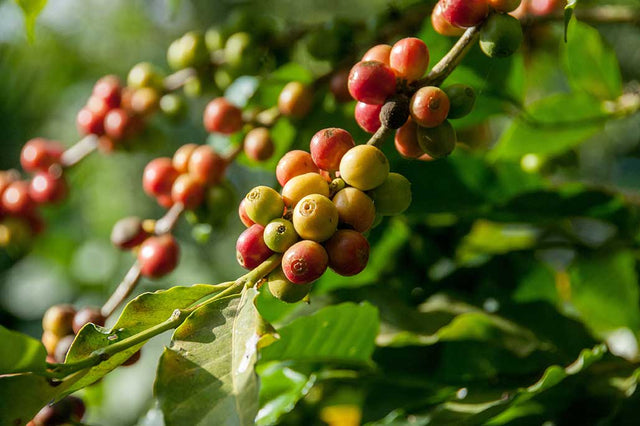The Coffee Bean Belt, often called the “coffee-growing belt,” is a region that wraps around the Earth between the Tropics of Cancer and Capricorn. Spanning approximately 25 degrees north and south of the equator, this area provides the perfect combination of temperature, altitude, and rainfall for cultivating coffee plants. It includes over 70 coffee-producing countries across South America, Africa, Asia, and Central America, making it the epicenter of the world’s coffee production.
Growing Coffee
Coffee plants, particularly the Arabica and Robusta varieties, thrive in climates that offer steady temperatures between 60–70°F (15–24°C) and rich, well-drained soils. These conditions are most commonly found in tropical highlands, where higher altitudes also contribute to the beans’ flavor profiles by slowing their maturation.
Coffee Bean Belt Locations
South America, especially Brazil and Colombia, dominates coffee production. Brazil, the world’s largest coffee producer, accounts for over a third of global coffee supply, with its beans known for their nutty and chocolatey flavors. Africa, home to coffee’s origins, boasts nations like Ethiopia, known for its fruity and floral Arabica beans. Meanwhile, countries like Vietnam lead Robusta coffee production in Asia, prized for its bold flavor and higher caffeine content.
The Coffee Bean Belt is not only about geography; it is a lifeline for millions of farmers and workers who depend on coffee cultivation for their money. Coffee production supports diverse cultures, traditions, and economies, making it a vital part of the global agricultural system.
Conclusion
Understanding the Coffee Bean Belt gives us deeper appreciation for every cup of coffee. From the mountains of Colombia to the highlands of Ethiopia, every bean tells a story of geography, climate, and the dedication of those who cultivate it.
More stories

Why Guatemala is a Hotspot for Growing Coffee

